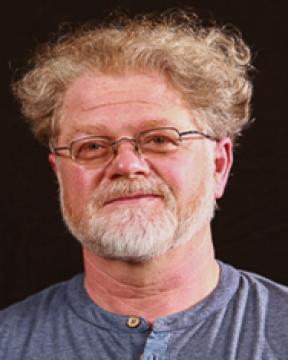Abstract:
Recently, non-continuous (step-wise) crack propagation has been observed in the numerical and experimental analysis concerning hydraulic fracture propagation in porous rock. It has been shown that the phenomenon is of a fundamental nature in the HF process [1,2]. Simultaneously, various regular crack propagation regimes (e.g. crack speed oscillation) have been discovered in the dynamic processes: in discrete elastic structures (splitting chain strips, crack propagation in lattices with different links [3-5]), and in continuous media (delamination of a flexural elastic beam rested on the Winkler foundation [6]).
The latter case has much in common with the phenomenon discussed in [1,2]. Among others, it was shown in [6] that, under the action of an incident sinusoidal wave, the steady-state mode exists only in a bounded domain of the wave amplitude. For higher amplitudes, local separation segments periodically emerge at a distance ahead of the main transition front. The analytical solution obtained allows analysis of this effect in detail and allows identification of a boundary between the steady-state and forerunning modes into the parametric space.
In a structured material (even of a simplest regular structure), depending on the applied load and the material properties, the following basic established (regular) dynamic fault / fracture propagation regimes can be identified [3-5]: fully open (classic) crack, bridge crack, and cluster-type propagation and forerunning. For more complex materials, all of those modes can appear together as a specific combination organized into rather complex, but still regular, regimes. We do not include the so-called branching crack propagation regime into this classification. This regime may also be very regular but it is not supported in one-dimensional front propagation as the previous modes.
References:[1] Cao T, Hussain F, Schrefler B. J. Mech. Phys. Solid. (2018); 111:113-133.
[2] Peruzzo C, Cao D, Milanese E, Favia P, Pesavento F, Hussain F, Schrefler B. Eur. J. Mech. A Solids (2019), 74:471-484.
[3] Slepyan, L., Movchan, A., Mishuris, G., Int J Fract, (2009) 162, 91-106.
[4] Ayzenberg-Stepanenko, M., Mishuris, G., Slepyan, L., Proc. R. Soc. A (2014), 470, 20140121.
[5] Nieves, M., Mishuris, G., Slepyan, L., Int. J. Solids Struct, (2016), 97-98, 699-713.
[6] Slepyan, L., Ayzenberg-Stepanenko, M., Mishuris, G., Forerunning mode transition in a continuous waveguide. (2015) J. Mech. Phys. Solids 78, 32-45.
|




















